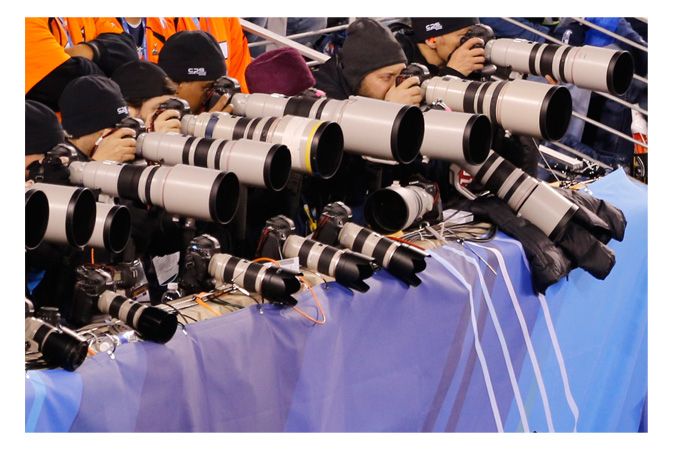Canon Congratulates Imaging Professionals Who Captured Best Super Bowl Moments

Canon press release:
Canon Congratulates the Team of Imaging Professionals Who Captured the Iconic Moments of the Big Game
MELVILLE, N.Y., February 6, 2014 – On February 2nd imaging professionals from across the country gathered in New Jersey to cover the big game between teams from Seattle and Denver. Prepared to battle the potential elements, these professionals provided football fans with images documenting monumental moments and plays that can be watched, enjoyed and relived for years to come.
“We are honored to have seen so many photographers using our equipment to capture images of the big game this past weekend. Canon is committed to ensuring our products and support live up to the needs and expectations of our customers, and it is always humbling to see Canon equipment being used in such high profile events,” said Yuichi Ishizuka, executive vice president and general manager, Imaging Technologies & Communications Group, Canon U.S.A.
Canon U.S.A., Inc. was on site in New Jersey with its Canon Professional Services (CPS) team to provide these professionals with convenient access to support personnel, equipment maintenance, and product loans. “I have personally been impressed with Canon’s proactive, prompt and thoughtful support for professionals,” said Tom Hauck, freelance sports photographer who photographed the game and has shot over 350 professional football games in his career. “Before the game, I sent all my gear to Canon’s Irvine service facility to be cleaned and checked and I got everything back in about two days. And at the game, Canon’s CPS staff was on site providing information on how to better understand and get the most from my equipment as well as peace of mind.”





